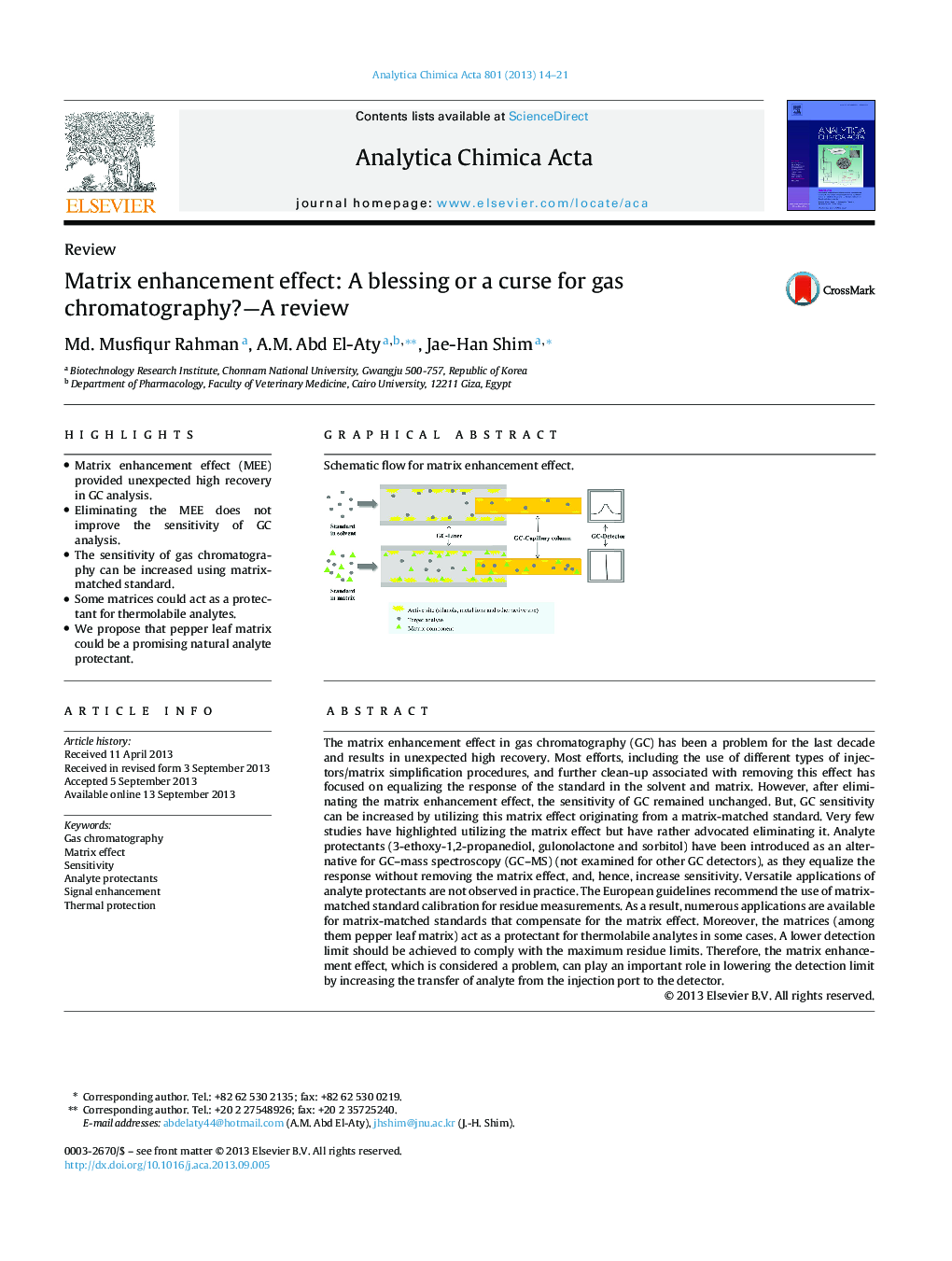| Article ID | Journal | Published Year | Pages | File Type |
|---|---|---|---|---|
| 1165402 | Analytica Chimica Acta | 2013 | 8 Pages |
•Matrix enhancement effect (MEE) provided unexpected high recovery in GC analysis.•Eliminating the MEE does not improve the sensitivity of GC analysis.•The sensitivity of gas chromatography can be increased using matrix-matched standard.•Some matrices could act as a protectant for thermolabile analytes.•We propose that pepper leaf matrix could be a promising natural analyte protectant.
The matrix enhancement effect in gas chromatography (GC) has been a problem for the last decade and results in unexpected high recovery. Most efforts, including the use of different types of injectors/matrix simplification procedures, and further clean-up associated with removing this effect has focused on equalizing the response of the standard in the solvent and matrix. However, after eliminating the matrix enhancement effect, the sensitivity of GC remained unchanged. But, GC sensitivity can be increased by utilizing this matrix effect originating from a matrix-matched standard. Very few studies have highlighted utilizing the matrix effect but have rather advocated eliminating it. Analyte protectants (3-ethoxy-1,2-propanediol, gulonolactone and sorbitol) have been introduced as an alternative for GC–mass spectroscopy (GC–MS) (not examined for other GC detectors), as they equalize the response without removing the matrix effect, and, hence, increase sensitivity. Versatile applications of analyte protectants are not observed in practice. The European guidelines recommend the use of matrix-matched standard calibration for residue measurements. As a result, numerous applications are available for matrix-matched standards that compensate for the matrix effect. Moreover, the matrices (among them pepper leaf matrix) act as a protectant for thermolabile analytes in some cases. A lower detection limit should be achieved to comply with the maximum residue limits. Therefore, the matrix enhancement effect, which is considered a problem, can play an important role in lowering the detection limit by increasing the transfer of analyte from the injection port to the detector.
Graphical abstractSchematic flow for matrix enhancement effect.Figure optionsDownload full-size imageDownload as PowerPoint slide
